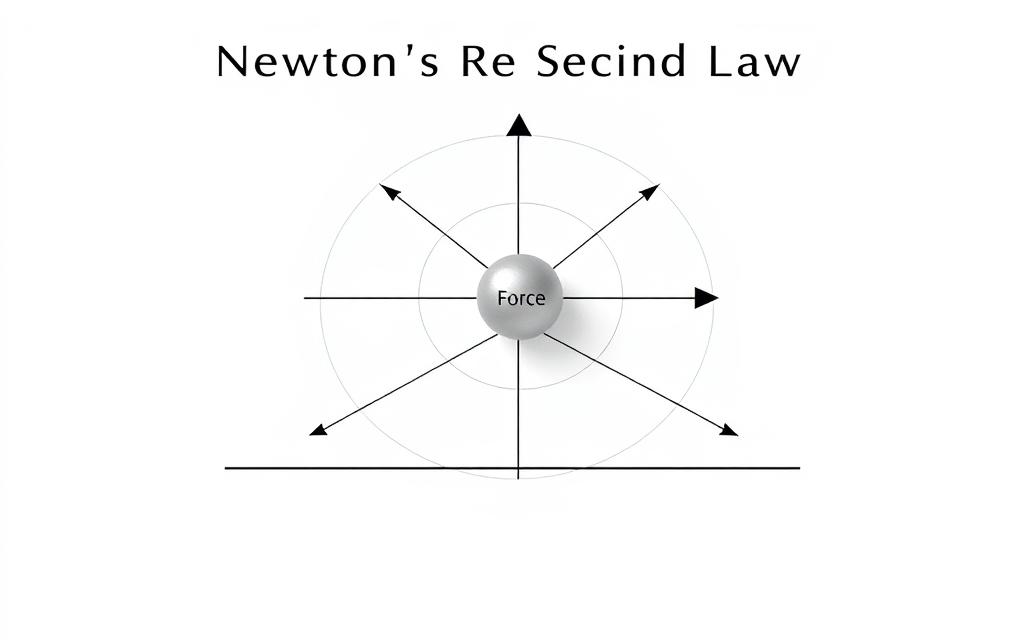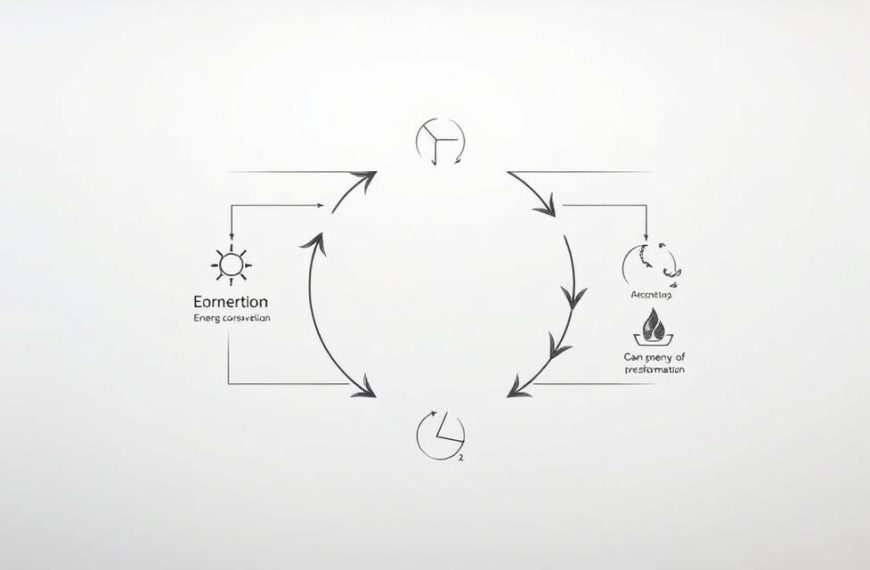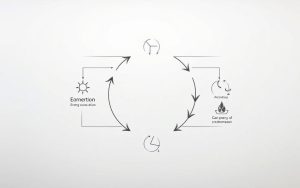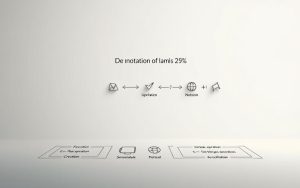Sir Isaac Newton’s 17th-century insights into force and movement remain central to modern physics. Among his three principles, the second law stands out for its precision in explaining how objects behave under unbalanced influences. This principle governs everything from football trajectories to rocket launches, making it indispensable in scientific calculations.
At its core, the law states that force equals mass multiplied by acceleration (F=ma). When an object’s mass stays constant, the relationship becomes strikingly clear: push or pull determines how quickly speed changes. This equation allows engineers and researchers to predict outcomes in scenarios ranging from car crashes to planetary orbits.
Unlike the first law – which focuses on balanced forces – this rule addresses dynamic systems where motion accelerates. The greater the applied force, the faster the resulting change in velocity. Practical applications abound, from designing safer vehicles to optimising sports equipment.
Quantitative by nature, Newton’s formulation transformed physics into a tool for precise measurement. Today, it underpins technologies that shape our world, proving why understanding acceleration and mass remains vital for scientific progress.
Introduction to Newton’s Second Law: The Science Behind Force and Motion
Understanding how objects accelerate requires grasping two critical factors: applied force and inherent resistance. This principle reveals that movement changes occur predictably when external influences overcome an object’s natural inertia. The relationship hinges on two variables – the total force exerted and the object’s mass.
When pushing a shopping trolley, doubling your effort doubles its acceleration – provided the load remains constant. Conversely, filling the trolley with heavier items reduces speed gains from the same push. These everyday observations align perfectly with the law’s mathematical framework: F = ma.
Three core truths emerge:
- Greater force generates proportionally higher acceleration
- Increased mass creates resistance to changes in motion
- Unbalanced forces always produce measurable movement alterations
This differs fundamentally from Newton’s first principle, which describes stationary objects or constant-speed scenarios. Here, the focus shifts to acceleration dynamics – the measurable effects when forces become unequal. Engineers use these relationships daily, whether calculating lorry braking distances or spacecraft thrust requirements.
what is newton’s second law
At the heart of classical mechanics lies a principle that quantifies how force alters movement. Formally stated: “The acceleration of an object depends directly on the net force applied and inversely on its mass“. This definition establishes cause-effect relationships in physical systems.

The mathematical expression F=ma encapsulates this relationship. Here, acceleration always points in the direction of the net force – a crucial vector aspect often overlooked. When tripling the force on a 5kg object, its acceleration triples, assuming constant mass.
| Variable | Role | Unit |
|---|---|---|
| Force (F) | Cause of motion change | Newtons (N) |
| Mass (m) | Resistance to acceleration | Kilograms (kg) |
| Acceleration (a) | Effect of applied force | m/s² |
Unlike situations with balanced forces described by Newton’s first principle, this second law motion analysis focuses on unbalanced scenarios. Engineers rely on these calculations when determining bridge load capacities or vehicle safety features.
The law motion states that measurable changes only occur when forces overcome inertia. This definition remains fundamental across physics disciplines – from calculating satellite trajectories to analysing protein movements in biomechanics.
Historical Context and Development of Newton’s Laws
The 17th-century scientific revolution created fertile ground for breakthroughs in understanding physical phenomena. Sir Isaac Newton’s Philosophiæ Naturalis Principia Mathematica (1687) revolutionised mechanics by introducing three universal principles governing motion. This seminal work synthesised celestial observations and terrestrial experiments into a cohesive framework.
Newton’s second principle emerged from attempts to quantify planetary orbits and everyday force interactions. Building on Galileo’s studies of falling objects and Kepler’s planetary laws, he established mathematical relationships between mass, acceleration, and applied influences. Key foundations included:
- Galileo’s concept of inertia (later Newton’s first law)
- Hooke’s theories on celestial force
- Huygens’ work on centrifugal effects
The Principia’s publication marked a paradigm shift from qualitative descriptions to predictive mathematics. For the first time, scientists could calculate exact outcomes using equations like F=ma. This approach unified earthly mechanics and cosmic phenomena under shared rules.
Newton’s framework resolved longstanding debates about motion’s nature while establishing physics as an exact science. Its enduring legacy lies in enabling precise engineering solutions and advancing technologies across centuries – from steam engines to space probes.
The Fundamental Equation: F = ma and Its Implications
Central to predicting movement outcomes, the equation F=ma serves as a mathematical compass in physics. Its vector notation (F⃗=ma⃗) reveals a critical truth: both force and acceleration share directionality. This alignment explains why pushed objects move along the applied push’s path rather than veering randomly.
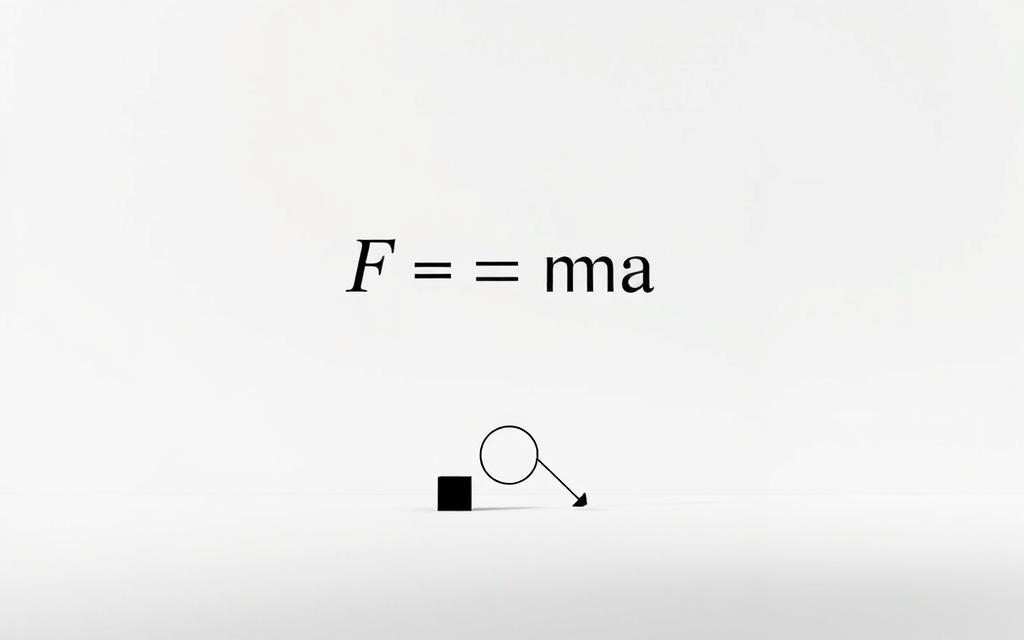
- Doubling force doubles acceleration (constant mass)
- Halving mass doubles speed gains (fixed force)
- Movement changes only occur with unbalanced influences
The product of mass and acceleration determines necessary force magnitudes. Engineers exploit these ratios when designing braking systems – heavier lorries require stronger deceleration forces to match car stopping distances.
Measurement units underpin practical applications. One newton (N) equals the force needed to accelerate 1kg by 1m/s². This standardisation enables precise calculations across industries:
| Scenario | Mass | Acceleration | Force Required |
|---|---|---|---|
| Cycle acceleration | 15kg | 2m/s² | 30N |
| Rocket launch | 500,000kg | 30m/s² | 15,000,000N |
From sports equipment testing to Mars rover deployments, the second law remains indispensable. Its equations transform theoretical concepts into actionable blueprints, proving why mastery of mass–acceleration relationships defines engineering excellence.
Derivation of Newton’s Second Law for Constant and Changing Mass
Physics becomes predictive when mathematical relationships explain observed phenomena. This section traces how momentum changes under different conditions, revealing why force equations adapt to mass variations.
Stable Mass Scenarios
When mass remains fixed, momentum shifts depend solely on velocity alterations. Consider a 500kg vehicle accelerating from 10m/s to 30m/s in 4 seconds:
F = m(v₁ – v₀)/(t₁ – t₀) = 500*(30-10)/4 = 2500N
Since acceleration equals (v₁ – v₀)/(t₁ – t₀), this simplifies to F=ma. Most solid objects follow this pattern, making it ideal for engineering calculations.
Systems with Mass Variation
Rocket launches demonstrate mass reduction as fuel burns. Initial momentum (m₀v₀) transforms into (m₁v₁) post-combustion. The force equation becomes:
F = (m₁v₁ – m₀v₀)/(t₁ – t₀)
This accounts for both velocity gains and mass losses over time. Engineers use these calculations to determine thrust requirements during spacecraft design.
| Scenario | Key Variables | Equation |
|---|---|---|
| Fixed mass | Constant m, changing v | F = mΔv/Δt |
| Variable mass | Changing m and v | F = (m₁v₁ – m₀v₀)/Δt |
Understanding these derivations helps physicists choose appropriate models. While most everyday situations use the simplified F=ma, aerospace systems require the comprehensive rate change momentum approach.
Exploring Net Force, Mass, and Acceleration Relationships
The interplay between net force, mass, and acceleration dictates how objects respond to external influences. Net force represents the vector sum of all forces acting on a body – a critical distinction that accounts for both magnitude and direction. Two people pushing a shopping trolley in the same direction create combined thrust, while opposing pushes result in weaker overall effect.
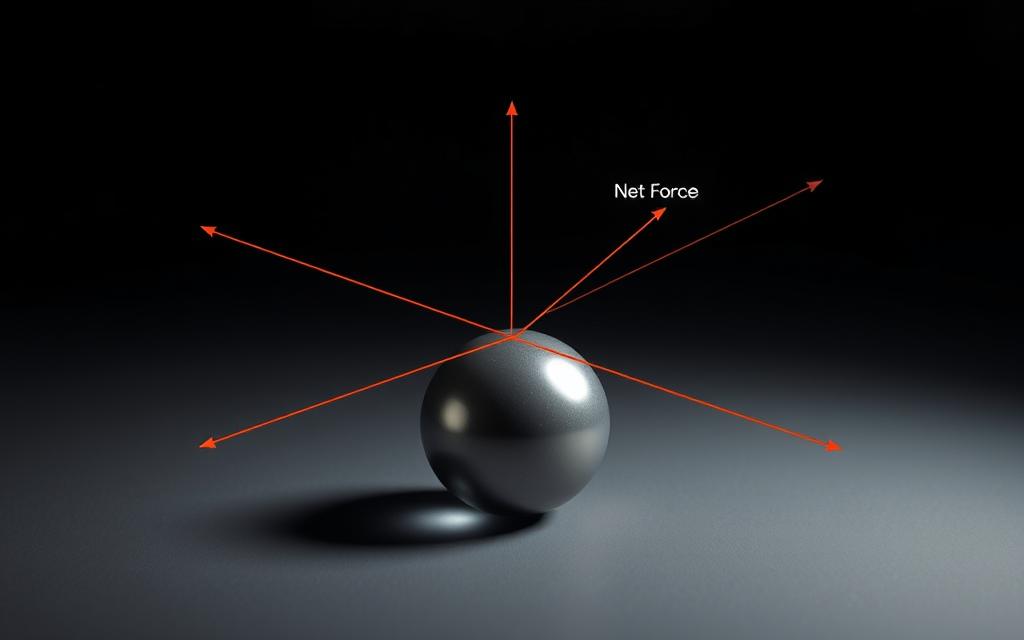
Acceleration depends directly on net force acting when mass remains constant. Doubling the push on an empty trolley doubles its speed gain, assuming no friction. This linear relationship allows engineers to calculate required thrust for aircraft or braking power for lorries with precision.
Mass introduces resistance to movement changes. Identical pushes produce drastically different results: a 10kg parcel accelerates faster than a 50kg crate. The inverse proportionality between mass and acceleration explains why heavy vehicles need stronger engines to match smaller cars’ speed.
Practical applications abound:
- Vehicle safety systems balance net force distribution during collisions
- Structural engineers calculate load-bearing limits using mass-acceleration ratios
- Sports scientists optimise equipment weight for peak athletic performance
When opposing forces cancel out (net force = 0), objects maintain constant velocity – a seamless connection to Newton’s first principle. This equilibrium concept underpins suspension bridge designs and precision machinery calibration across industries.
Real-World Applications and Practical Examples
From playgrounds to launch pads, the relationship between force applied and movement shapes countless activities. Whether launching a football or designing spacecraft, this principle governs outcomes through predictable physical interactions.

Everyday Scenarios and Engineering Insights
A footballer’s kick demonstrates how direction and force influence a ball’s trajectory. Striking it harder increases acceleration, sending it farther – a direct application of F=ma. Similarly, pushing an empty supermarket trolley requires less effort than a loaded one, as greater mass resists changes in motion.
Transport systems rely on these calculations. Engineers determine engine power by analysing vehicle weights and desired velocity. For instance, lorries need stronger brakes than cars due to higher mass-to-deceleration ratios.
In aerospace, rocket launches exemplify extreme force applications. Thrust must overcome both gravity and the craft’s mass to achieve lift-off. Precise calculations ensure sufficient acceleration to reach orbital speeds.
Structural safety innovations also depend on these principles. Seat belts absorb crash forces by extending stopping times, reducing passenger acceleration during collisions. Such designs protect lives by managing energy transfer effectively.
Comprehensive Solved Examples Illustrating the Law
Practical demonstrations clarify complex principles more effectively than theoretical discussions alone. By analysing real-world scenarios, the relationship between force, mass, and acceleration becomes tangible. These examples show how calculations predict outcomes in engineering and physics.
Car Acceleration Example
Consider a vehicle with a mass of 1,200kg subjected to a force acting on it from its engine. If the net force equals 2,400N, the acceleration of the object calculates as:
a = F/m = 2400/1200 = 2m/s²
This equation confirms that doubling the amount of force would double speed gains, assuming constant mass.
Rocket Launch Dynamics
A spacecraft with a mass of 15,000kg requires thrust to overcome gravity. To achieve lift-off acceleration of 25m/s², engineers calculate:
F = ma = 15,000 × 25 = 375,000N
As fuel burns and mass decreases, the same thrust yields higher acceleration – a critical factor in orbital manoeuvres.
These examples demonstrate how the equation F=ma solves problems across scales. From urban transport to space exploration, mastering these principles enables precise control over motion in dynamic systems.

